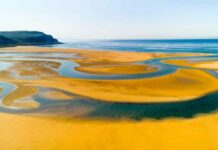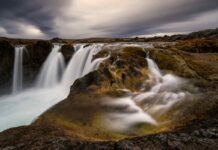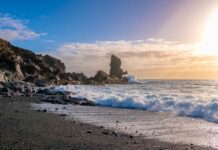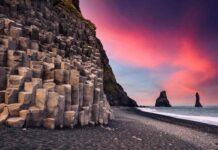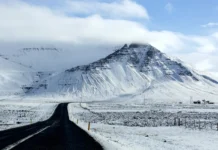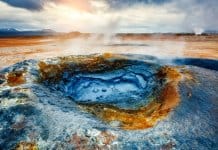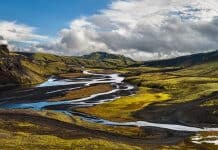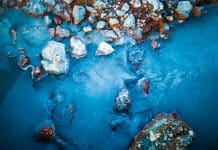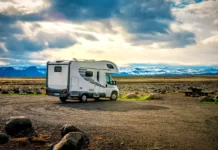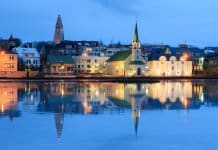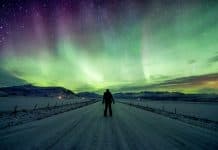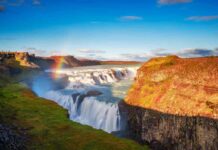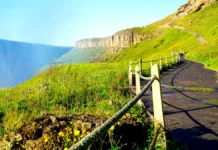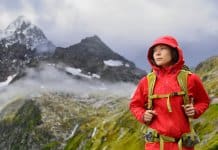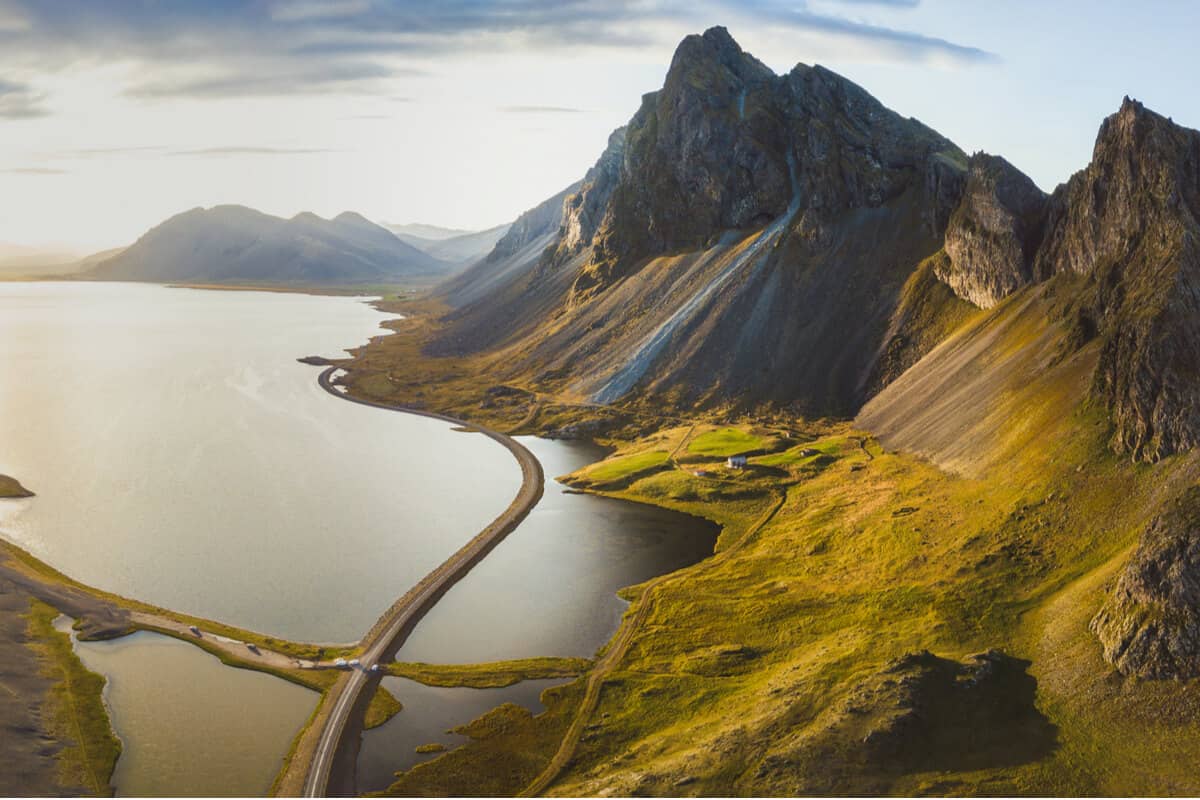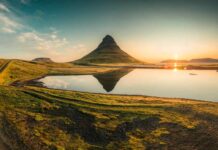Whenever travelers visit Iceland, there are certain items that must be included on everyone’s bucket list. Everyone knows about trekking massive glaciers, hiking careening waterfalls, and taking a dip in steaming geothermal pools and swimming pools. But let’s not forget about Iceland fjords; they’re another must on any adventurer’s Iceland itinerary. Many people tend to associate deep, plunging fjords with Norway’s coastlines. But Iceland is another Nordic country that possesses this geology of sweeping, dramatic landscapes.

Iceland has not one but three regions with spectacular fjords. The North fjords, the West fjords, and the East fjords in Iceland all give you the chance to experience this gorgeous natural wonder. The stunning natural beauty of these picturesque landforms is one you do not want to miss. Let’s look at how many fjords are in Iceland as well as where to see them.
What’s a Fjord and How are They Formed?
Fjords are long, deep, narrow inlets of land shaped like a U. Picture a valley filled with water that eventually flows out to the sea. The part of the fjord that connects it to the water is called the mouth. You’ll find fjords all over the world from Norway to New Zealand and yes, even in Iceland.
They are formed by the slow movement of a glacier tongue over a long period of time. Many of the fjords we see today were created by the glaciers that existed during Earth’s last Ice Age. Some can reach up to 160 kilometers (almost 100 miles) in length.
East Fjords Iceland
The East fjords of Iceland are perhaps the most visited ones in the country. As you make your way along Iceland’s east coast on the Ring Road route, you’ll see some incredible scenery along the way.
Once you’ve left Vatnajökull National Park, head north on Route 1 toward the town of Egilsstadir. Much like California’s Pacific Coast Highway, the eastern part of Iceland’s Ring Road hugs the coast and winds in and out of fjord territory. The breathtaking views can be quite distracting, so remember to keep your eyes on the road if you’re driving.
There are also several quaint Icelandic seaside villages just a short distance away as you make your way up the coast. Seyðisfjörður Is particularly charming and sits at the innermost part of a fjord by the same name. It’s home to the iconic powder blue church in Iceland built in the traditional Icelandic architectural style.
Unlike the Westfjords, you can visit the East fjords in Iceland during winter because they’re part of the main highway.

The West Fjords Iceland
The West fjords Iceland is a territory that’s not as famous or well-known as its counterpart to the east. This is because it’s a little bit more difficult to get to than other zones in Iceland. Many of the gravel roads and F-roads that access this part of the country are off-limits outside of the summer months. This is one of the more remote parts of Iceland, so not a lot of travelers make it here.
If you do by chance make it to the Western fjords Iceland, you’ll not only be rewarded with spectacular views, but also one of our most majestic waterfalls. Dynjandi waterfall is one of the top destinations for people exploring the West fjords of Iceland on a road trip.
Dynjandi is the biggest waterfall in the Westfjords and is comprised of many smaller waterfalls merging together. It truly is a gem of West Iceland and one of the more unusual waterfalls you’ll see in our naturally blessed country.
You’ll also find the Hornstrandir Nature Reserve here and the famous Látrabjarg Cliffs. They jut out to sea and are home to Icelandic North Atlantic puffin colonies in the summer.
The North Fjords in Iceland
Of Iceland’s 109 fjords, you’ll find the majority of them in the East or the West. There are, however, some fjords in the North. There are two big ones and several smaller ones in the northern zone. Iceland’s capital of the north and the region’s biggest town, Akureyri, rests at the foot of Eyjafjörður (island fjord). Many cruise ships pass by here to visit the island of Hrísey, known as Iceland’s pearl of nature.
Skagafjörður Is the other large fjord in the area and also has several islands you can visit. This area is also home to the Tröllaskagi (Troll Peninsula) and lovely Siglufjörður village. It sits on the Siglufjörður fjord (sailing fjord).
Another one of the best fjords in Iceland is Skagafjörður fjord. Along the banks of this lovely Icelandic fjord, you’ll find the Hofsós thermal pool in the town of the same name. This geothermal bathing spot is especially striking thanks to the surrounding views of high mountains and the fjords dipping into the sea. Take it all in during the summer or as you watch the Northern Lights dancing in the skies above in the winter.

Iceland Fjords vs Norway Fjords
While not as jagged or steep as Norway’s craggy fjords, Iceland fjords are still a breathtaking sight to behold. Drive tours of Iceland offer stunning panoramic views all around, and our country’s gorgeous fjords are an integral part of that.
Iceland Fjords in Winter
Icelandic travel during the summer months is much easier because all of the country’s roads are open. If you’re planning on taking day tours or excursions outside of peak season, it’s best to stick to the East fjords and the North fjords. Weather conditions in the winter often make roads impassable during the winter months in the Westfjords. It’s best to wait until road conditions are safe to head west.
Iceland Fjords: Stunning Natural Beauty
Fjords in Iceland are a natural wonder hundreds of thousands of years in the making. Come take them in with all of their majesty and you will not be disappointed. After all, the whole reason you’re camping in Iceland is to explore the country’s Great Outdoors. Experience all we have to offer.

